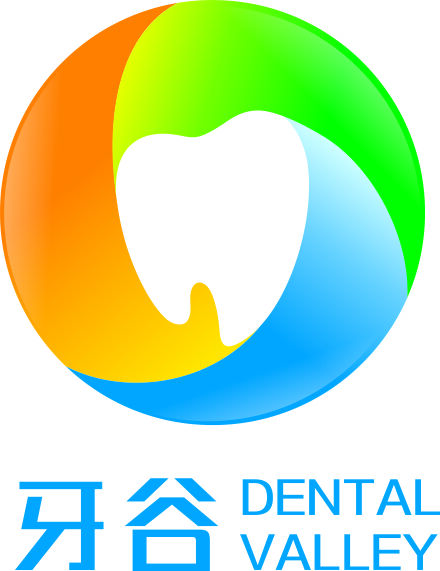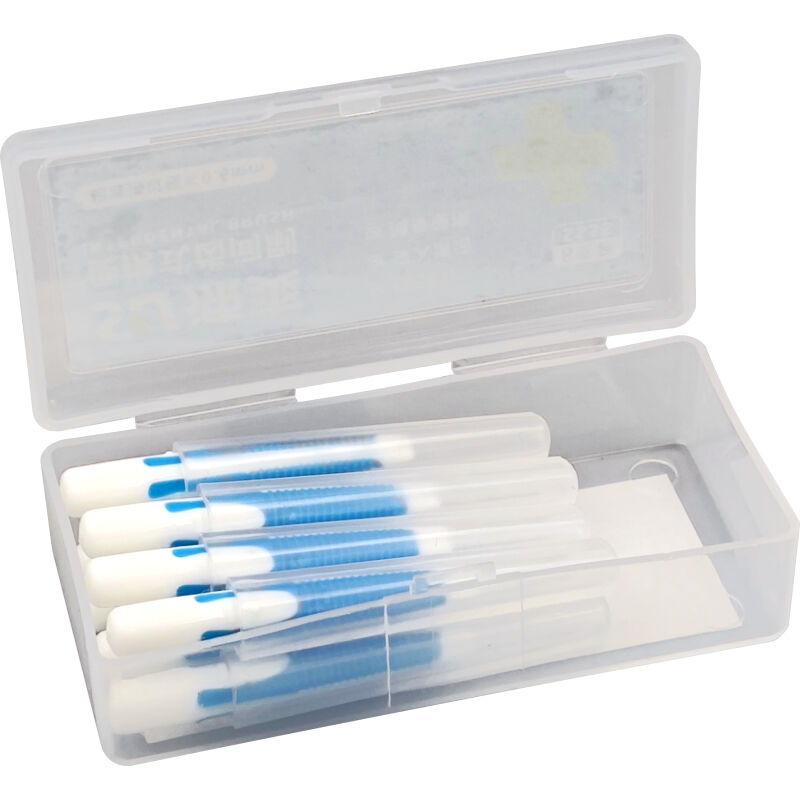Välttämätöntä Hammaspuhdistustyökalut plakkiin ennaltaehkäisynä
Ultrasooninen skaalointi: Tehokkuus ja potilaan mukavuus
Hammaslääkärit toimistot käyttävät nykyään yhä enemmän ultraäänikaavinta, koska ne toimivat paljon tehokkaammin plakin ja tarttarin poistamisessa kiitos korkean taajuuden värähtelyt. Vertailussa vanhaan manuaaliseen kaavintaan, nämä laitteet poistavat kiintoisemmat jäännökset huomattavasti nopeammin kun hammaslääkäri liikkuu suussa. Monet potilaat pitävät itse menetelmää miellyttävämpänä, koska värähtelyt eivät ole yhtä äärimmäisenä kuin metallin raapiminen hampaista, ja joskus potilaat eivät jopa enää tarvitse tunnustusruiskeita. Useiden klinikoiden tutkimukset osoittavat, että näiden välineiden säännöllinen käyttö näyttää vähentävän haitallista bakteeristoa ikenissä ja johtavan tervehtuneeseen suuhygieniaan kokonaisuudessaan. Hammaslääkärien mukaan laitteiden käyttö on helppoa, mikä tarkoittaa puhtaampia hampaita lyhyemmässä ajassa. Vierailut päättyvät nopeammin, ja sekä hammaslääkäri että potilas ovat tyytyväisiä tuloksiin.
Ilmakehäsuihkut: Kevyt emaalinsävyjen poisto
Ilmahiominen toimii erittäin hyvin häiritsevien hampaiden pintavärien poistamisessa, kunnes paineilmaa, vettä ja erikoishienoa pölyä sekoitetaan. Vanhoihin menetelmiin verrattuna ilmahiominen on huomattavasti pehmeämpää emalille, sillä se ei naarruta tai kuluta hampaanpintoja puhdistuksen aikana. Useimmat hammaslääkärit huomaavat, että potilaat ovat tyytyväisempiä ilmahiomishoitojen jälkeen, mikä näkyy myös monien vuosien kliinisten palautteiden perusteella. Tavallisiin tarkastuksiin monet hammaslääkärikeskukset sisällyttävät nykyään ilmahiomisen osaksi vakinaista puhdistusohjelmaansa, koska se torjuu sekä plakin kertymistä että kiinnittyneitä värjymiä vahingoittamatta luonnollisten hampaiden ulkonäköä. Jotkin klinikat tarjoavat jopa erillisenä palveluna tätä hoitoa niille, jotka haluavat lisävalkaisua tavallisten puhdistusten välillä.
Välirunkosuovut perusteellisen puhdistuksen takaamiseksi
Välileuat harjat on tehty erityisesti pääsemään tiiviisti hampaiden väliin siellä missä normaalit hammasharjat eivät vain pääse, tarjoten jotain ylimääräistä suun hygieniassa. Ne tekevät melko hyvän työn estäessään plakin kertymistä ajan mittaan ja pitävät itse asiassa ikeniä myös terveempinä. Joitain tutkimuksia tukee tätä osoittamalla, että nämä pienet harjat toimivat tehokkaammin plakkia vastaan kuin tavalliset vanhat hammaslankamenetelmät, joita useimmat ihmiset noudattavat. Kun joku haluaa alkaa käyttää niitä säännöllisesti, oikean koon valitseminen on melko tärkeää. Liian iso ei sovi oikein, liian pieni ei myöskään tehdi paljon hyötyä. Sen löytäminen mikä toimii parhaiten vaatii usein hieman kokeilua ja virheiden kautta, mutta maksaa varmasti takaisin pitkässä juoksussa sekä hampaissa että ikenissä.
Mitä moderneja työkaluja käytetään periodontaalitaudin torjumiseen
Alalehtojen puhdistus mikro-noozlen kärkipäin
Uusimmat mikrokourukärjet muuttavat peliä ikenien alla olevan puhdistamisen suhteen, mikä on erittäin tärkeää parodontitautien torjumisessa. Niiden erityislaatuisuus liittyy kykyyn ohjata vesijaksoja tai antiseptiä suoraan vaikeasti saavutettaviin parodontilupiin, joissa tuleksa kertyy. Hammaslääkärit kertovat saavansa todellisia tuloksia potilaista, joita hoidetaan näillä työkaluilla, sillä ne puhdistavat kovaa biofilmia ja bakteereja, joita perinteiset menetelmät eivät osaa poistaa. Tutkimukset osoittavat, että nämä pienet kourut vähentävät merkittävästi haitallisten bakteerien määrää välttäen samalla leikkaushoitoa tai muita aggressiivisia hoitokeinoja. Monet alansa ammattilaiset ovat huomanneet parantuneen lopputuloksen käyttämällä tätä tekniikkaa vanhojen menetelmien sijaan. Potilaat ovat myös tyytyväisempiä, koska toimenpiteissä aiheutuu vähemmän epämukavuutta. Kaikille, joilla on ikeongelmia, tämä on suuri edistysaskel kohti kevyempää ja pitkäaikaisesti menestyksellisempää hoitoa.
Laseritasustettu bakteerien vähentäminen
Hammashoidon laserit tarjoavat erittäin tarkan tavan päästä eroon bakteereista ja puhdistaa infektoituneet alueet. Näiden laitteiden lähettämät suuntautuneet valosäteet tuhoavat bakteerit vähäisin vaurioin ympäröivälle terveelle kudelle. Useiden vuosien tutkimusten perusteella on todettu, että kun hammaslääkärit käyttävät laseria puhdistamiseen, hampaiden tulehduspesäkkeet pienenevät ja bakteerien määrä näissä vaikeasti saavutettavissa kohdissa vähenee. Hoitoa saaneet potilaat kertovat tuntevansa olosaan nopeammin terveeksi kuin perinteisten menetelmien jälkeen, koska suun kudosvauriot ovat vähäisempiä. Monet hammashoitoalan ammattilaiset suosittelevat nykyään laserhoitojen sisällyttämistä säännöllisiin tarkastuksiin parantaakseen kokonaisuudessaan suunterveyttä. Näinä näkyvänä hyvinä tuloksina ja vähäisempanä haittapilvessä istuvien potilaiden mukavuuden kannalta ei ole ihme, että laserit ovat yleistymässä modernien hammaslääkäriklinikoiden käytössä maanlaajuisesti.
Tarkkatarkkuudelliset laitteet vähemmän invasiiviselle hoitolle
Digitaalijärjestelmät hampaiden kuoppien havaitsemiseen
Digitaaliset kariesherätteet muuttavat ehkäisevän hammaslääketieteen peliä, koska ne löytävät kariesia paljon aikaisemmin kuin tavalliset silmätarkastukset. Perinteiset menetelmät tukeutuvat siihen, mitä hammaslääkäri voi nähdä paljaalla silmällä, kun taas nämä uudet järjestelmät käyttävät edistynyttä teknologiaa, kuten infrapuna-valoa, tunnistamaan pienetkin alkuvaiheen hajua, joita kukaan muu ei huomaisi ennen kuin tilanne pahenee. Ongelmien varhainen havaitseminen tarkoittaa sitä, että hammasrakennetta voidaan säilyttää enemmän, koska hammaslääkärit voivat puuttua asiaan aikaisemmin sen sijaan, että odotettaisiin suurempia ongelmia, jotka vaativat porausta tai täyttöjä. Tutkimukset osoittavat, että nämä digitaaliset työkalut löytävät kariesia selvästi enemmän kuin vanhat menetelmät aikanaan. Numerot tukevat selvästi sitä, miksi hammaslääkäriklinikan tulisi harkita tällaisen laitteiston hankintaa sen sijaan, että pysyttäisiin vanhoissa lähestymistavoissa. Lisäksi potilaat voivat itse nähdä näillä järjestelmillä kuvatun tilanteen suustaan. Näkyvissä on usko, kun kyseessä on ymmärtää, miksi hampaanpyyhintä ja -välihuuhtelu ovat niin tärkeitä tulevien hammasongelmien ehkäisemiseksi.
Ergonomiset suunnitelmat helpoille juuriplanointeille
Hampaanhoidon välineissä hyvä ergonomia on erityisen tärkeää juurikäsiteltyjen hoidon yhteydessä. Työkalut, joiden kahvat on suunniteltu viisaasti kulmassa ja jotka on valmistettu kevyistä materiaaleista, auttavat vähentämään käden ja ranteen väsymistä pitkien toimenpiteiden aikana. Lääkärit huomaavat, että työskentely on tehokkaampaa, kun välineet eivät aiheuta niin paljon lihaskipuja. On olemassa tutkimuksia, jotka osoittavat että hampaanhoidon ammattilaiset kärsivät toistuvien rasitusvammojen osalta melko korkealla tasolla, joten kyse on enemmän kuin vain mukavuudesta. Parannetut ergonomiset ominaisuudet tarkoittavat myös sitä, että hammaslääkärit voivat hoitaa työnsä nopeammin. Myös potilaat huomaavat erot. Vähemmän rasittava työskentely mahdollistaa sulavamman ja tarkemman hoidon, mikä vähentää epämukavuutta sekä potilaalle että hoitohenkilökunnalle. Lopulta ergonomisesti suunnitelluilla työkaluilla on kaksi keskeistä tehtävää: ne suojaavat hampaanhoidon ammattilaisia vammoilta ja parantavat potilaiden hoitokokemusta.
Kliiniset hygienia-standardeja ja työkalujen sterilointi
Autoklaaviprotokollat ristiyhtäistyön estämiseksi
Hammaslääkärioiden klinikoilla ympäri maata autoklaavit ovat tärkeässä roolissa pitäen kaiken puhtaana ja steriilinä, jotta potilaat eivät sairastu uudelleenkäytettyjen työkalujen vaikutuksesta. Periaatteessa näissä koneissa tapahtuu bakteerien tuhoaminen paineistetulla kuumalla höyryllä, joka tappaa kaikenlaista haitallista mikrobiologista materiaalia, mukaan lukien bakteerit, erilaiset virusit ja jopa kovimmankin pinnan homeet. Useimmat hammaslääkärit noudattavat kuitenkin melko tiukkoja sääntöjä niiden käytössä. Ensimmäiseksi työkalut täytyy puhdistaa huolellisesti ennen kuin ne laitetaan koneeseen. Sen jälkeen valitaan oikeat ohjelman asetukset riippuen siitä, millaisista materiaaleista on kyse. Älä myöskään unohda säännöllisiä tarkistuksia, joissa käytetään biologisia indikaattorinauhoja, jotka kertovat, toimiiko koko prosessi tarkoituksen mukaisesti. Tarkastellessa oikeita lukuja on selvää, miksi tämä on niin tärkeää. Käytännöt, jotka noudattavat tiukasti oikeita sterilointimenetelmiä, raportoivat selvästi vähemmän tartuntoja kuin ne, joissa välillä otetaan lyhyitä reittejä. Molemmat, eli tartuntatautiseura ja amerikan hammaslääkäriyhdistys, ovat laatineet yksityiskohtaiset oppaat siitä, miten sterilointi tulee oikein suorittaa, korostaen juuri sitä, kuinka kriittinen tämä toimenpide on hygieniaa yllä pidettäessä ja lopulta potilaiden suojelemiseksi.
Yhdenkäyttöisten hylittävien työkalujen ottamisen käyttöön suuntat
Yhä useammat hammaslääkäritoimistot eri puolilla maata ovat siirtymässä kertakäyttöisiin tarvikkeisiin osana sitoutumisestaan parempaan hygieniaan ja potilaiden turvallisuuteen. Kun väline heitetään pois jo ensimmäisen potilaan jälkeen, tartuntojen leviämisen mahdollisuus on käytännössä nolla. Toimistot huomaavat, että tämä lähestymistapa tekee työstä tehokkaampaa, sillä pienien laitteiden sterilointiin ei enää tarvitse käyttää aikaa. Lisäksi suurin osa nykyisin käynnillä olevista potilaista haluaa tietää, että hammaslääkäri suhtautuu siivoukseen vakavasti. Tutkimustiedon mukaan noin 80 %:lla potilaista on mieluummin tohtori, joka käyttää kertakäyttöisiä tarvikkeita, koska ne tuntuvat puhtaammilta. Tässä lähestymistavassa on tietysti myös haittapuolia. Roskakorit täyttyvät nopeammin ja kuukausittaiset kustannukset nousevat selvästi verrattuna monikäyttöisiin välineisiin. Silti hammaslääkärit raportoivat, että tartuntahuolet ovat vähentyneet ja asiakassuhteet ovat vahvemmat niiden herkkien potilaiden kanssa, jotka arvostavat lisätoimia tartuntojen estämiseksi. Siksi monet toimistot jatkavatkin siirtymistä kertakäyttöisiin tarvikkeisiin huolimatta kustannusten ja ympäristövaikutusten lisääntymisestä.

Tulevaisuuden innovaatiot hammaspuhdistustechnologiassa
Tekoälylliset plakkikarttausanturit
Uudet tekoälyyn perustuvat plakkikartoitustyökalut muuttavat pelikenttää tavallisille hammashoidon puhdistuksille, koska ne löytävät ja seuraavat plakkia huomattavasti paremmin kuin perinteiset menetelmät. Näitä älykkäitä antureita käyttämällä hammaslääkärit saavat välitöntä palautetta käynnin aikana, jolloin he voivat mukauttaa puhdistusmenetelmiään sen mukaan, mitä kunkin asiakkaan tarpeet vaativat. Olemme havainneet, että jotkut klinikat ovat alkaneet käyttää tätä teknologiaa, jolloin tekoäly havaitsee plakin kertymää, joka muuten saattaisi jäädä huomaamatta, mikä johtaa hoitoihin, jotka kohdistuvat ongelma-alueille suoraan kohdalleen. Myös potilaat hyötyvät näistä järjestelmistä, jotka näyttävät heille visuaalisesti, missä plakki piileksii näytöillä värillisinä kuvina, mikä tekee siitä helpommin ymmärrettävän, miksi tietyt alueet vaativat lisähuomiota. Käytännöt, jotka ottavat tämäntyyppisen teknologian käyttöön, erottuvat kilpailijoista samalla, kun ne auttavat asiakkaita ylläpitämään tervehtä hampaita. Lisäksi, kun potilaat näkevät ennen ja jälkeen -kuvat, heidän todennäköisyytensä noudattaa suositeltuja päivittäisiä hampaiden puhdistus- ja villityöruutioita paranee.
Bioaktiiviset pinta-kiinteyskerrokset työkalujen kestoon
Bioaktiiviset pinnoitteet pidentävät hammaslaitteiden käyttöikää vähentämällä kulumista ja hankausta ajan mittaan. Näiden pinnoitteiden arvoa korostaa niiden kyky parantaa sekä tehokkuutta että hygieniaa, mikä tarkoittaa, että hammaslääkäreiden ei tarvitse vaihtaa välineitä yhtä usein. Lisäksi ne tekevät itse puhdistuksesta tehokkaampaa. Tutkimukset bioaktiivisista pinnoitteista ovat osoittaneet selkeitä parannuksia välineiden puhdistustehoon, mikä tekee niistä viisaan sijoituksen monille hammaslääkäriliikkeille. Kun klinikat siirtyvät käyttämään näitä erityispinnoitteita, niiden kustannukset laskevat yleensä, koska uusia laitteita tarvitaan vähemmän. Ja totuus on, että vähemmän hylättyjä välineitä tarkoittaa myös vähemmän jätettä kaatopaikoille. Kun yhä useampi potilas toivoo ympäristöystävällisempiä vaihtoehtoja tinkimättä laadusta, hammasalan ammattilaiset, jotka ottavat nämä innovaatiot käyttöön, sijoittuvat edelläkävijäksi vastaamaan nykyaikaisia odotuksia sekä ympäristövastuusta että kustannustehokkaasta hoitotavasta.
UKK
Mikä on päätavoite ulträakustisten skaalereiden käytöstä hampaanpuhdistuksessa?
Ultrasooniset skaalit katkaisevat rungon ja kiviä tehokkaasti korkeataajuisten vibratioiden avulla, tarjoavat parantunutta hammaslääkärin tehokkuutta ja potilaan mukavuutta vähentämällä tarvetta anestesioille.
Miten ilmakehät eroavat perinteisistä värjien poisto-keinoista?
Ilmakehät käyttävät ilman, veden ja hienon polttopudelin yhdistelmää saadakseen puhtaaksi hampaat ilman emäyden vahingoittamista, mikä tekee niistä pehmeämpiä kuin perinteiset menetelmät.
Miksi välihammaskutistimet pidetään tehokkaampina kuin perinteinen siidentys?
Tutkimus on osoittanut, että välihammaskutistimet vähentävät rungot tehokkaammin saavuttamalla alueita hampaiden välillä, joita säännölliset hammasharjat ja siide eivät pysty koskettamaan, tukeakseen siten parempaa nenkäterveys.
Mitä roolia mikro-nozzletipit pelottavat periodontaalisairaudessa?
Mikro-nozzletipit tarjoavat syvän ja tarkoituksenmukaisen puhdistuksen nenkäviivan alla tarkkoilla ratkaisuilla, vähentämällä biofilmaa ja bakteereja ilman invasiivisia toimenpiteitä.
Miten tekoälyllä varustetut rungon karttausanturit vaikuttavat hammaspuhdistuksiin?
Nämä anturit parantavat hampaisten puhdistuksia tarjoamalla real-time -tietoja, mikä mahdollistaa henkilökohtaiset puhdistussuunnitelmat ja parantaa diagnostisen tarkkuuden ja potilaiden koulutusta.
Sisällys
- Välttämätöntä Hammaspuhdistustyökalut plakkiin ennaltaehkäisynä
- Mitä moderneja työkaluja käytetään periodontaalitaudin torjumiseen
- Kliiniset hygienia-standardeja ja työkalujen sterilointi
- Tulevaisuuden innovaatiot hammaspuhdistustechnologiassa
-
UKK
- Mikä on päätavoite ulträakustisten skaalereiden käytöstä hampaanpuhdistuksessa?
- Miten ilmakehät eroavat perinteisistä värjien poisto-keinoista?
- Miksi välihammaskutistimet pidetään tehokkaampina kuin perinteinen siidentys?
- Mitä roolia mikro-nozzletipit pelottavat periodontaalisairaudessa?
- Miten tekoälyllä varustetut rungon karttausanturit vaikuttavat hammaspuhdistuksiin?

